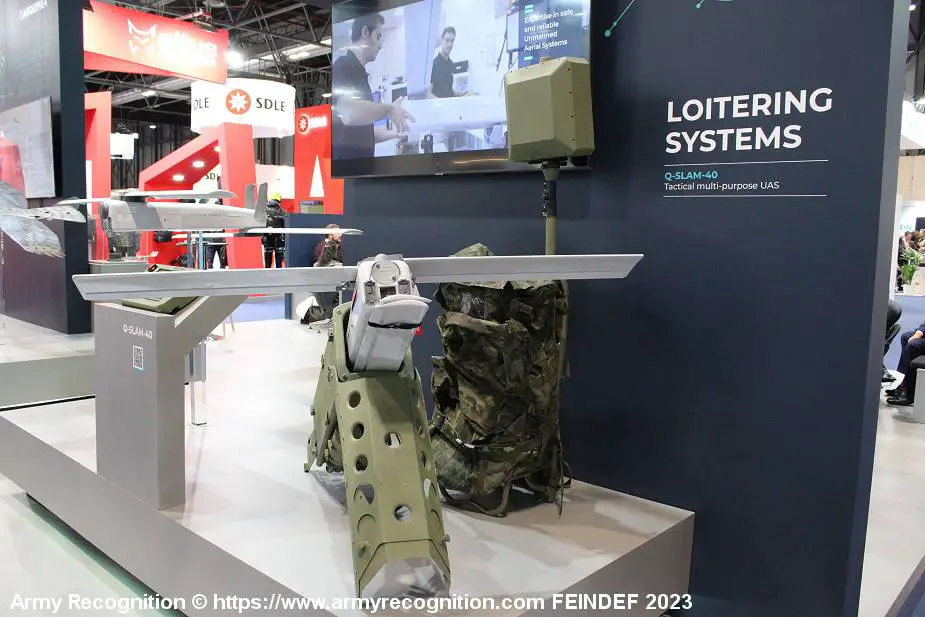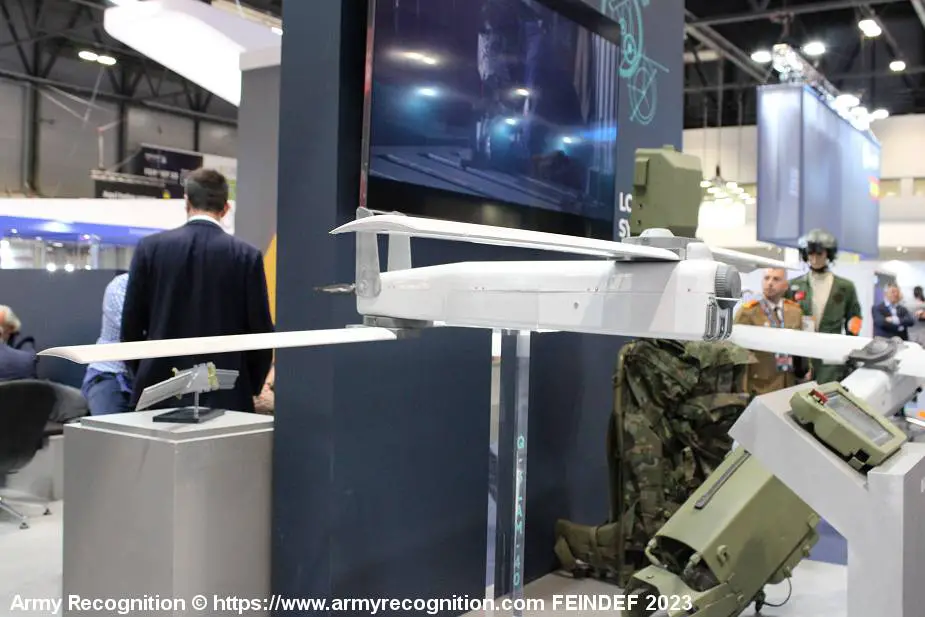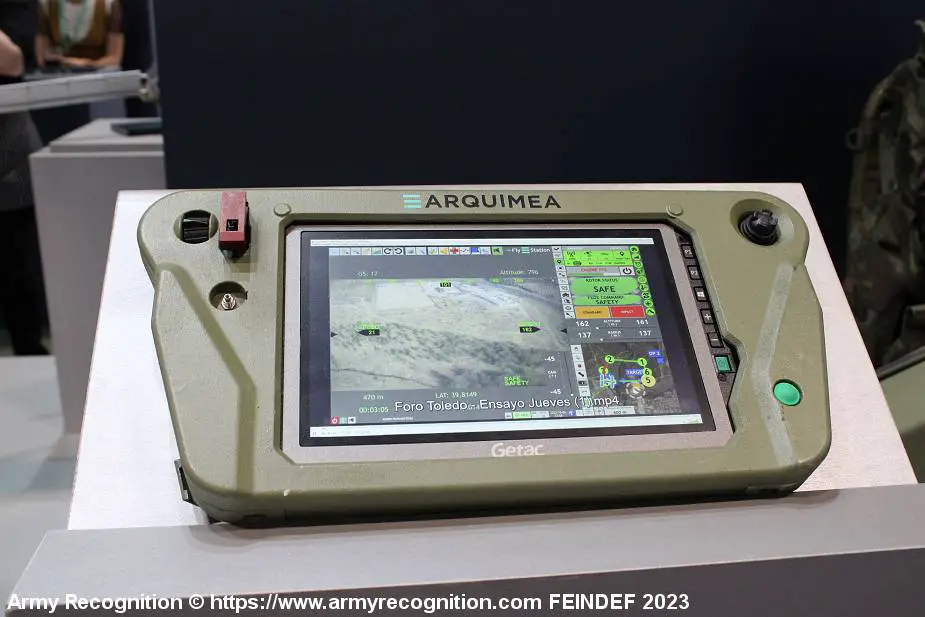The Q-SLAM-40 loitering munition, designed and developed by the Spanish Company ARQUIMEA, is now ready for production. During FEINDEF 2023, a defense exhibition held in Madrid, Spain, the Spanish company displayed its new loitering munition as well as other defense products including TECHFIRE, a firing control system for mortars and artillery, BC-LITE, a ballistic calculator for mortars, eCOMPASS digital goniometer that improves accuracy and reduces aiming time to 50 seconds, mCOUNTER mortar firing counter, to improve maintenance and safety, and SHEPHERD-MIL ADVANCED, the surveillance drone shaped like a bird of prey.
Follow Army Recognition on Google News at this link

The Q-SLAM-40 loitering munition consists of three main components: the portable pneumatic tube launcher, the aerial platform drone, and the ground control system which includes an antenna and a rugged tablet. (Picture source Army Recognition)
The Q-SLAM-40 loitering munition, also known as a suicide drone or kamikaze drone, is a weapon system category in which the munition loiters around the target area for some time, searches for targets, and attacks once a target is located. These devices are designed to strike at a moment's notice, and they can also be recalled if the target disappears or if the mission is aborted.
Q-SLAM-40 is a tactical loitering system designed to perform diverse types of short-range operations, including protection, surveillance, reconnaissance, target acquisition, or damage assessment, safely and efficiently. The loitering system has been designed to tackle complex combat environments in special or conventional operations on the field or from fixed defensive positions.
The Q-SLAM-40 loitering system can be used to perform different types of operations, from protection and surveillance to reconnaissance and target acquisition. The pilot can control the platform and abort the mission or redirect it safely if necessary.
The Q-SLAM-40 loitering munition consists of three main components: the portable pneumatic tube launcher, the aerial platform drone, and the ground control system which includes an antenna and a rugged tablet. The whole system weighs 28 kg and is carried by a two-man team. One of them carries two munitions while the second carries the launcher, the antenna, and the radio link, and the tablet-based ground control station.
The loitering munition of the Q-SLAM-40 is launched with the help of a pneumatic launcher tube, which offers the power to launch the drone. The launcher tube can be used to launch several drones. A single compressed air bottle can be used to launch three drones. The pneumatic launcher tube has a low thermal and acoustic signature, enabling multiple launches.

Close view of the Q-SLAM-40 loitering munition drone. (Picture source Army Recognition)
The Q-SLAM-40 loitering munition drone operates electrically, driven by a two-blade propeller located at the rear end of the fuselage. Its airframe, the aerial platform, has a design featuring foldable wings for effortless transportation and swift deployment. There are two wings positioned at the top front and another pair at the rear bottom of the fuselage. The drone's nose can accommodate various types of warheads.
Equipped with a Sony IMX290LQR-C camera, the Q-SLAM-40 drone provides High Definition video output, and an InfraRed camera can be fitted upon request. The optronic sensor not only ensures the operator can positively identify targets before an attack but also permits remote operation of the system in scenarios where GNSS (Global Navigation Satellite System) is inaccessible. This is achievable due to the two-way high-speed data link functioning in the 2.4 GHz band, with standard navigation relying on GNSS signals.

The Q-SLAM-40 loitering munition drone is operated thanks to the use of a rugged tablet. (Picture source Army Recognition)
Thanks to the ground control system, the operator controls the system and can safely abort the mission if necessary. The operator can view real-time video through the ground control station and can input the data of the target before take-off or change it by visual detection during the flight, ensuring full mission control.
In terms of technical features, the Q-SLAM-40 loitering munition has flight endurance from 12 to 15 minutes with a range from 6 to 15 km. It can fly at speeds from 72 to 90 km/h with a diving phase speed of 126 km/h. It can be operated at an altitude of up to 2,000 m and from 20 to 200 m during the attack phase.















